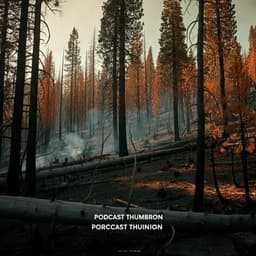
Environmental Studies and Forestry
Future transition from forests to shrublands and grasslands in the western United States is expected to reduce carbon storage
J. M. Kodero, B. S. Felzer, et al.
Discover how climate change is set to reshape the landscapes of the western United States, with significant shifts from forested regions to shrubland and grassland, resulting in substantial carbon loss. This crucial research by Jared M. Kodero, Benjamin S. Felzer, and Yuning Shi underscores the urgent need to address the impacts of climate change on our ecosystems.
~3 min • Beginner • English
Related Publications
Explore these studies to deepen your understanding of the subject.







